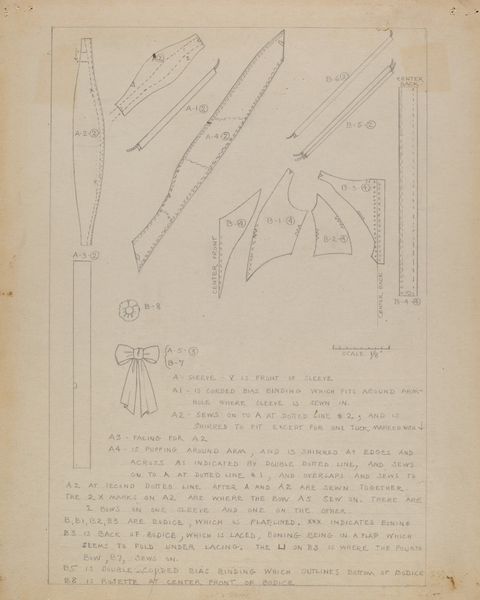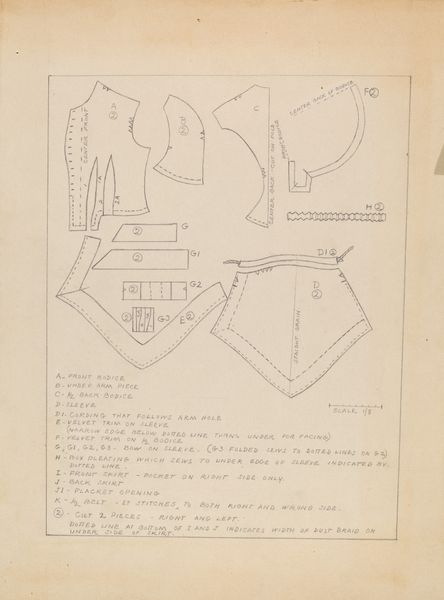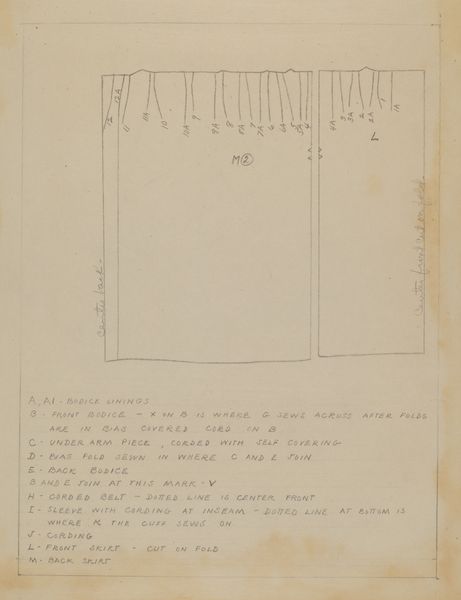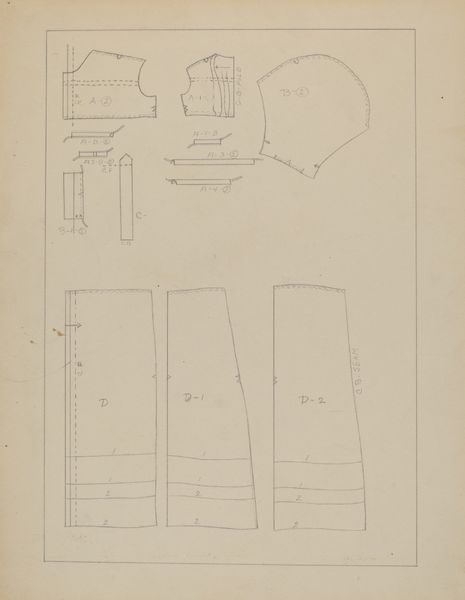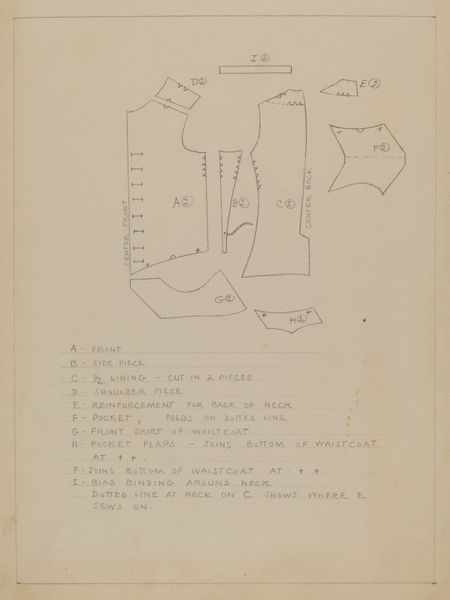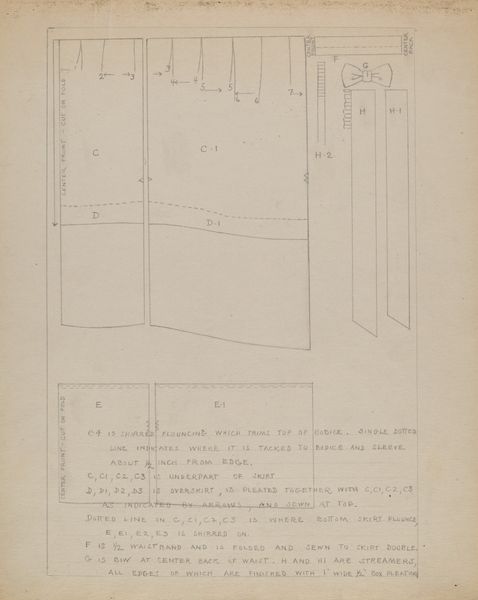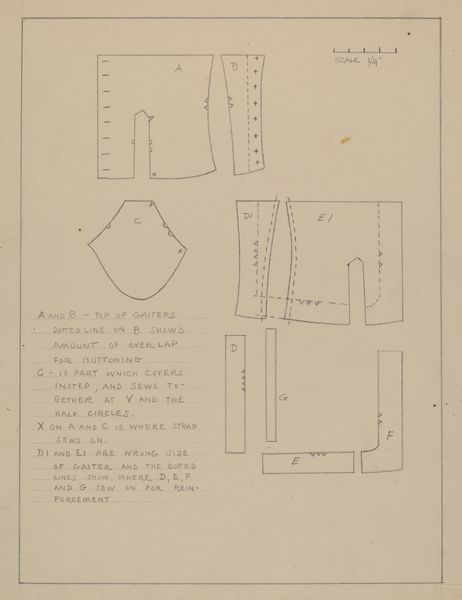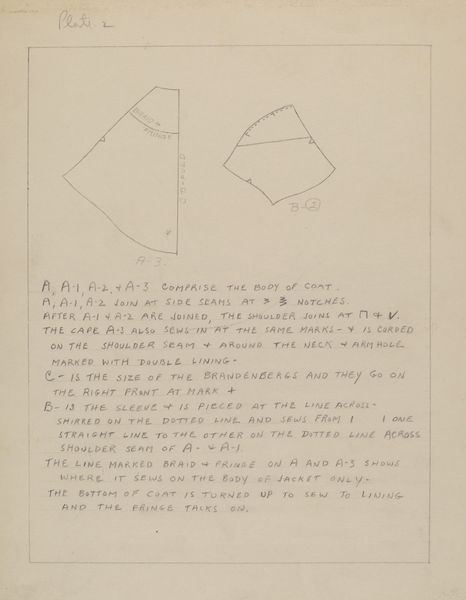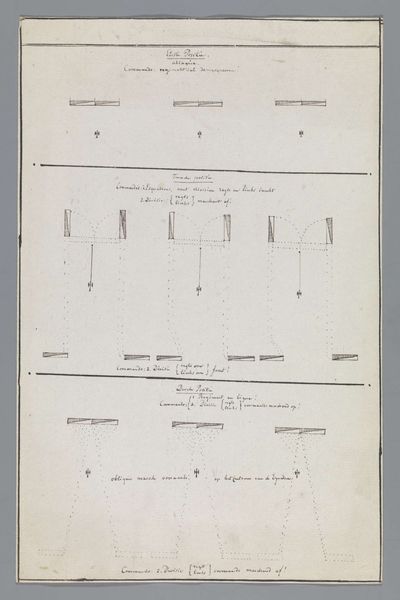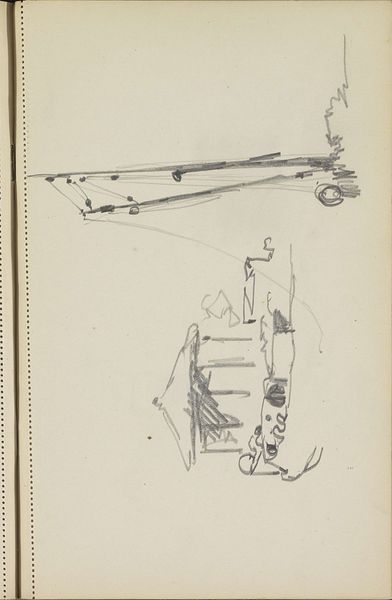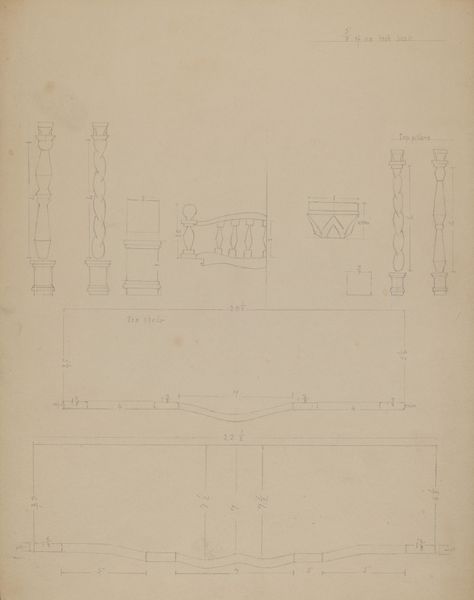
drawing
#
drawing
#
geometric
Dimensions: overall: 29.1 x 22.3 cm (11 7/16 x 8 3/4 in.)
Copyright: National Gallery of Art: CC0 1.0
Editor: Here we have Bessie Forman’s "Dress Pattern," dating from around 1938. It’s a drawing, seemingly a technical diagram. It strikes me as quite abstract, with its geometric shapes and handwritten instructions. What do you see in this piece, considering its formal elements? Curator: Immediately, the interplay of line and form captures my attention. The precision of the lines defining the pattern pieces juxtaposes beautifully with the fluid, almost cursive script that accompanies them. Consider the spatial relationships – how these fragmented shapes interact on the page. There’s a clear structure, a logical arrangement, even within what seems like a purely functional design. Does the apparent functionality negate its potential as a purely aesthetic object? Editor: I suppose I assumed its practical purpose would overshadow its aesthetic qualities. But the formal aspects are really compelling. The handwriting has an appealing visual texture that enhances the clean, technical lines. Curator: Precisely. And think about the composition: the distribution of elements, the white space, the weighting of certain areas over others. Are these choices purely utilitarian, or is there a subconscious artistry at play? Look closely at how Forman varies the line weight to differentiate between cutting lines, seam lines, and design details. Semiotically, what is communicated by those varying thicknesses and densities? Editor: I didn’t think to analyze it as a deliberate composition, but now I can’t unsee it! The deliberate marks create a considered visual experience, regardless of function. Curator: Yes, it compels one to reconsider assumptions of purpose in visual analysis. By isolating the inherent qualities, such as form and line, one may unveil artistry, irrespective of authorial intention. Has our discussion altered your initial perception of this artwork? Editor: Definitely. I appreciate how focusing on form revealed an artistry that I would have otherwise overlooked. Curator: And I believe that we have come closer to perceiving some element of beauty, hidden in plain sight.
Comments
No comments
Be the first to comment and join the conversation on the ultimate creative platform.
